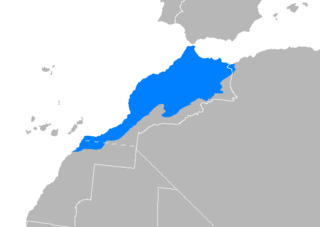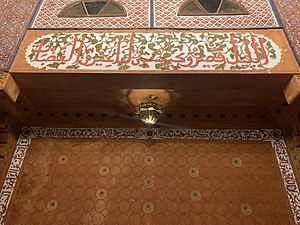This article may need to be rewritten to comply with Wikipedia's quality standards. (June 2017) |
| Moroccan Arabic | |
|---|---|
| Darija | |
| العربية المغربية الدارجة | |
| Pronunciation | [ddæɾiʒæ] |
| Native to | Morocco |
| Ethnicity | Moroccan Arabs, also used as a second language by other ethnic groups in Morocco |
| Speakers | L1: 29 million (2020)[1] L2: 9.6 million (2020)[1] Total: 40 million (2020)[1] |
| Dialects | |
| Arabic alphabet | |
| Language codes | |
| ISO 639-3 | ary |
| Glottolog | moro1292 |
 Map of Moroccan Arabic[2] | |

Moroccan Arabic (Arabic: العربية المغربية الدارجة, romanized: al-ʻArabiyyah al-Maghribiyyah ad-Dārija[3] lit. 'Moroccan vernacular Arabic'), also known as Darija (الدارجة or الداريجة[3]), is the dialectal, vernacular form or forms of Arabic spoken in Morocco.[4][5] It is part of the Maghrebi Arabic dialect continuum and as such is mutually intelligible to some extent with Algerian Arabic and to a lesser extent with Tunisian Arabic. It is spoken by 90.9% of the population of Morocco.[6] While Modern Standard Arabic is used to varying degrees in formal situations such as religious sermons, books, newspapers, government communications, news broadcasts and political talk shows, Moroccan Arabic is the predominant spoken language of the country and has a strong presence in Moroccan television entertainment, cinema and commercial advertising. Moroccan Arabic has many regional dialects and accents as well, with its mainstream dialect being the one used in Casablanca, Rabat, Tangier, Marrakesh and Fez, and therefore it dominates the media and eclipses most of the other regional accents.
SIL International classifies Moroccan Arabic, Hassaniya Arabic and Judeo-Moroccan Arabic as different varieties of Arabic.
- ^ a b c Moroccan Arabic at Ethnologue (27th ed., 2024)

- ^ Ennaji, Moha (1998). Arabic Varieties in North Africa. Centre for Advanced Studies of African Soc. p. 6. ISBN 978-1-919799-12-4.
- ^ a b Manbahī, Muḥammad al-Madlāwī; منبهي، محمد المدلاوي. (2019). al-ʻArabīyah al-Dārijah : imlāʼīyah wa-naḥw العربية الدارجة : إملائية ونحو (1st ed.). Zākūrah. ISBN 978-9920-38-197-0. OCLC 1226918654.
{{cite book}}: CS1 maint: location missing publisher (link) - ^ Abdel-Massih, Ernest Tawfik (1973). An Introduction to Moroccan Arabic. Center for Near Eastern and North African Studies, University of Michigan. ISBN 9780932098078.
- ^ Yabiladi.com. "Darija, a lingua franca influenced by both Arabic Tamazight and". en.yabiladi.com. Retrieved 4 June 2020.
- ^ "RGPH 2014".